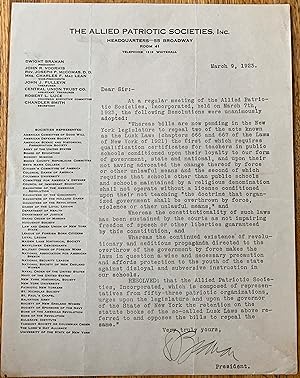Braman Dwight (2 results)
Product Type
- All Product Types
- Books (1)
- Magazines & Periodicals
- Comics
- Sheet Music
- Art, Prints & Posters
- Photographs
- Maps
-
Manuscripts &
Paper Collectibles (1)
Condition
Binding
- All Bindings
- Hardcover (1)
- Softcover
Collectible Attributes
- First Edition
- Signed
- Dust Jacket
- Seller-Supplied Images
- Not Printed On Demand (1)
Free Shipping
Seller Location
Seller Rating
-
LeatherBound. Condition: New. Leatherbound edition. Condition: New. Leather Binding on Spine and Corners with Golden leaf printing on spine. Bound in genuine leather with Satin ribbon page markers and Spine with raised gilt bands. A perfect gift for your loved ones. Reprinted from 1927 edition. NO changes have been made to the original text. This is NOT a retyped or an ocr'd reprint. Illustrations, Index, if any, are included in black and white. Each page is checked manually before printing. As this print on demand book is reprinted from a very old book, there could be some missing or flawed pages, but we always try to make the book as complete as possible. Fold-outs, if any, are not part of the book. If the original book was published in multiple volumes then this reprint is of only one volume, not the whole set. IF YOU WISH TO ORDER PARTICULAR VOLUME OR ALL THE VOLUMES YOU CAN CONTACT US. Resized as per current standards. Sewing binding for longer life, where the book block is actually sewn (smythe sewn/section sewn) with thread before binding which results in a more durable type of binding. Pages: 28 Language: English Pages: 28.
-
Typed Letter Signed, as President, Allied Patriotic Societies, New York, March 9, 1923, to an unidentified recipient
Manuscript / Paper Collectible
No Binding. Condition: Very Good. quarto, 1page, in very good clean condition. No recipient named, but likely sent to Frank Wilson, an upstate New York Assemblyman, urging him to reject repeal of the so-called ¿Lusk Laws¿ ¿ remnants of the first American ¿Red Scare¿ that followed World War I. In 1919, the Lusk Committee of the New York Legislature ¿ formally the ¿Joint Legislative Committee to Investigate Seditious Activities¿ ¿ began investigating Revolutionary Radicalism by raiding New York offices maintained by the Russian Bolshevik Government, determined to show that the I.W.W. and other American left wingers were inspired to promote ¿seditious¿ violence against the US government by Soviet Russian agents. This dovetailed with the Palmer Raids of 1919 and 1920, conducted by Attorney General Mitchell Palmer¿s Justice Department which arrested radicals and anarchists, 500 of whom, being foreign citizens, were deported from the U.S. As further follow-up, in 1921, the New York Legislature passed laws to insure that the public would be educated about the dangers of the Communist and Radical Menace. But the hysteria had faded by the time Democrat Al Smith was elected Governor of New York in 1922. He supported Democrats in the Legislature who proposed repeal of the ¿Lusk Laws¿. These included the requirement that public school teachers and even private schools supported by religious denominations swear loyalty ¿to our form of government¿ and not advocate its overthrow by force or violence. The Allied Patriotic Societies, supposedly representing 53 ¿patriotic organizations¿, opposed the repeal because of the ¿continued existence of revolutionary and seditious propaganda.¿ Braman, who headed the group, was a Boston and New York banker with extensive Western investments, a confidant of the late President McKinley who had given his yacht to the US Government for military purposes during the Spanish-American War and allowed his 800 acre Maine estate to be used as a hospital for wounded soldiers. Braman¿s efforts were in vain. With the active support of Governor Smith, the Lusk laws were repealed.


![Seller image for Americanization of adult aliens. [Statement at] Hearings before a subcommittee of the Committee on immigration and naturalization, House of representatives.February 17, 1927. (1927) [LeatherBound] for sale by S N Books World](https://pictures.abebooks.com/inventory/md/md31650022562.jpg)
